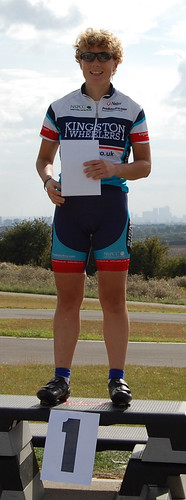But people kept hounding, er, asking me when I was going to write a Kona race report. And I didn't feel I could go on blogging about the new things happening in my life until I put Kona to bed, so here it is finally. With this closure I will be getting back to more regular blog posting, for better or worse (though I admit the self-imposed hibernation has been nice!)
Without further adieu then... the Ironman World Championships 2009.
The Lead-up
The weather: sunny, humid and unbelievably hot. The wind: variable but not nearly as bad as it had been earlier in the week. The atmosphere around town: electric, overwhelming, and just the slightest bit cheesy... like this man-made event was the biggest thing people had ever experienced in their lives. Call me a cynic but as much as I was happy to be there, I just couldn't part with the sense that it was all a bit too surreal. But there I was, in the middle of it, finally experiencing the goal that had driven my training for nearly two years. It was on.
At the bike check-in, I was handed a free Cervelo t-shirt, "thanks for riding a Cervelo!" The industry and media folks lined up along the check-in chute noting down everything from bike brand and wheels to saddle and brake levers. The transition zone on the pier was nothing short of awe-inspiring; to think that 1800 people had, just as I, carefully micromanaged every last detail in the hope of setting themselves up for the race of their lives. The volunteers outnumbered the racers, some coming from further away than I had just to be a part of it all. And all of us were as ready as we'd ever be, or at least as ready as we could be. Can't really ask for much else.
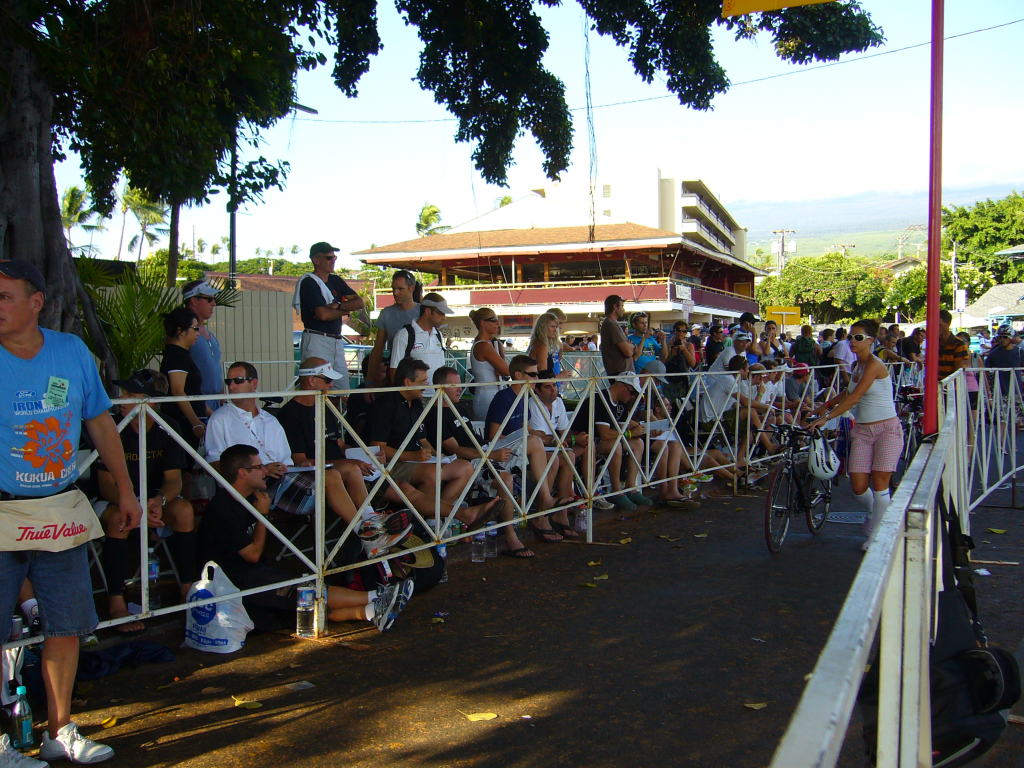
Note-taking at bike check-in.
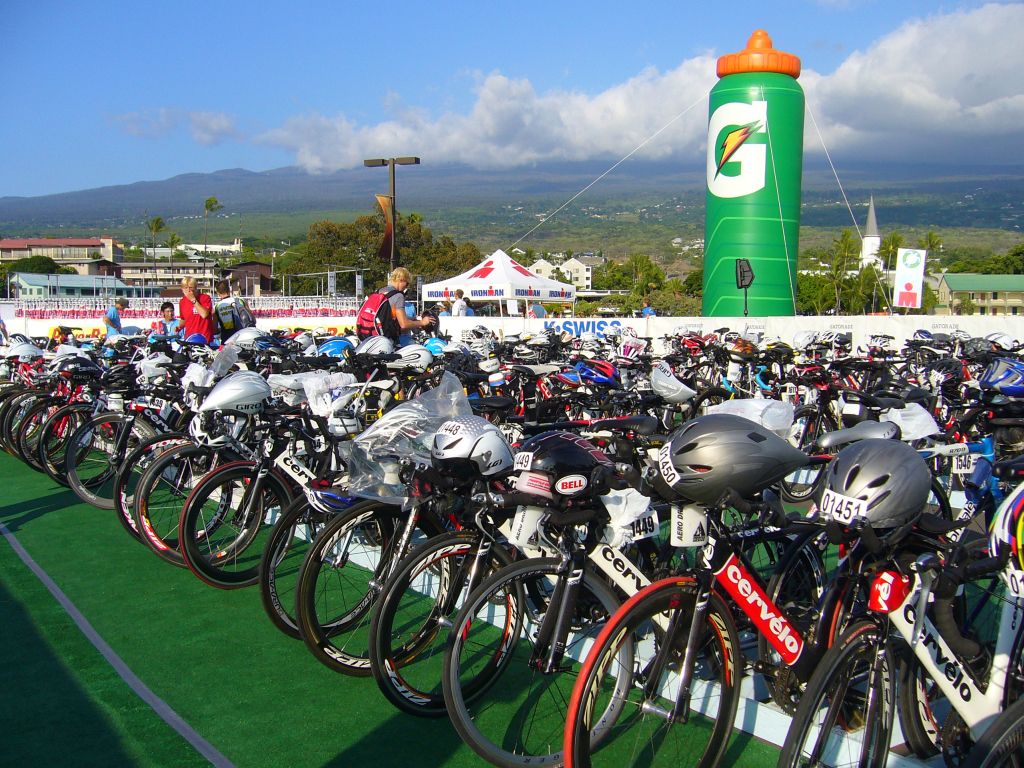
My bike is just one of many Cervelos (#1449).
The Swim
Not much of note here, except a few things:
-- all week long I'd been swimming along the official mile marker buoys with a Garmin 305 under my swimcap noting the distance and swimming 1:36/100m regularly. Race day I managed to swim nearly an extra 400m and not due to zig-zagging. The course was long! Didn't make my 1:09 feel any better, but at least it was the same for everyone.
-- my speed suit chafed the hell out of my neck and shoulders but easily bought me close to 5 minutes, well worth it!
-- I managed not to get sick on the salt water or swallow too much of it.
-- I picked a bad starting spot in the middle and got punched, kicked and swum over more than any other triathlon I've done in my life.
-- for the most part, I was pretty pleased with my swim and feeling fine for the start of the bike.
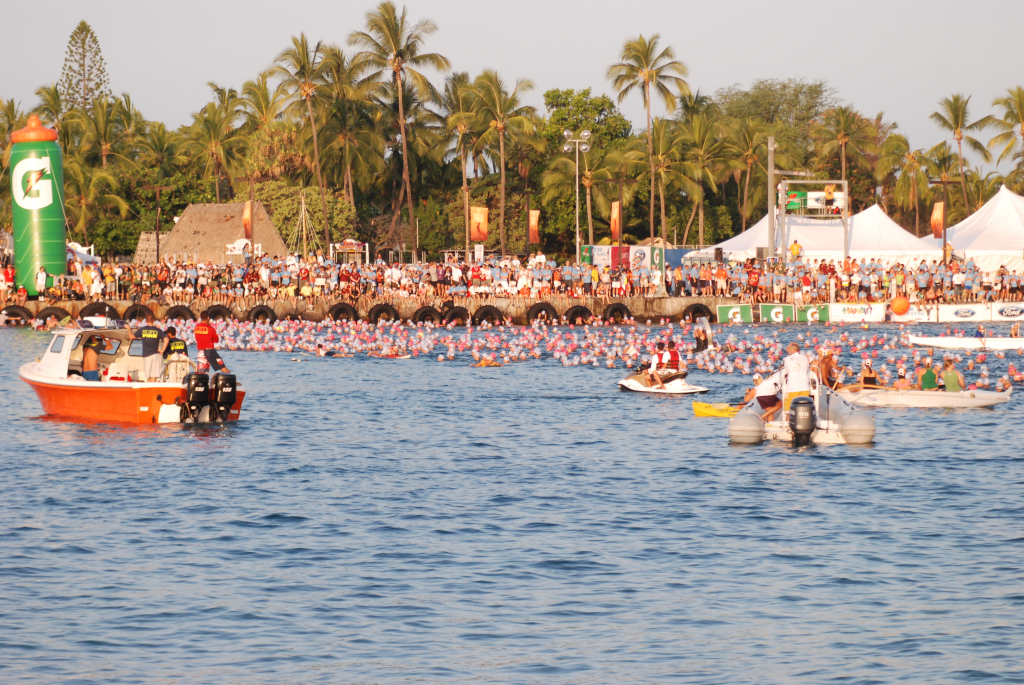
Age groupers lined up for the start.
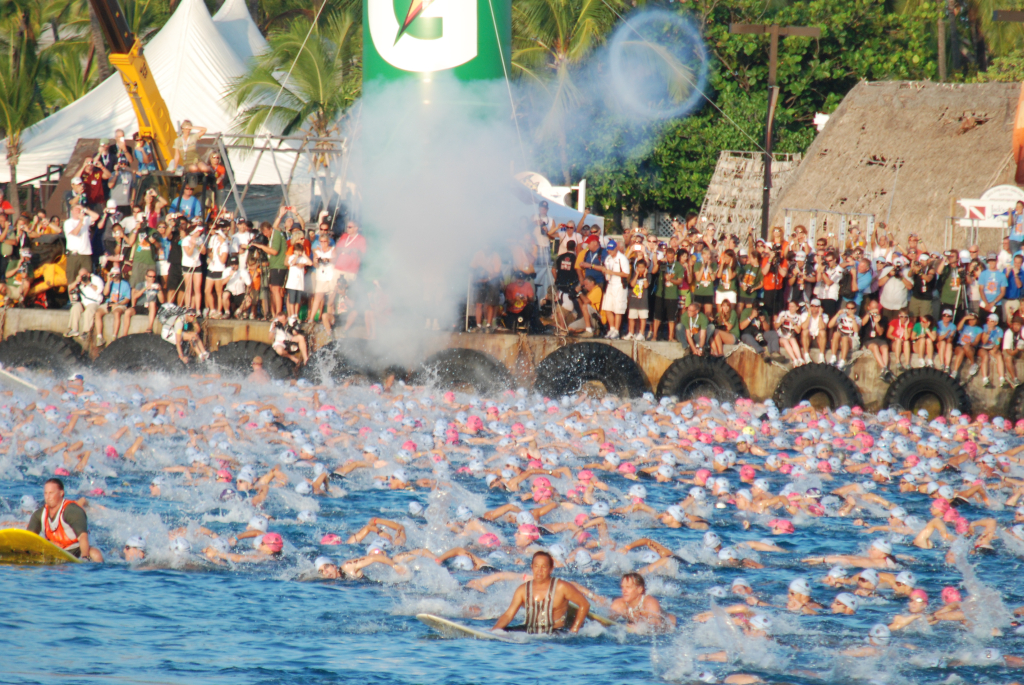
And the cannon goes!
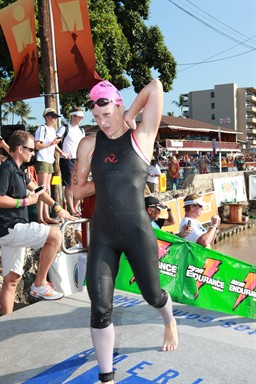
Pulling off the speed suit (note the calf guards!)
The Bike
It was a smoking hot day out there, 30+ degrees, and my frozen bottles on the bike were lukewarm in no time. I felt pretty good early on, surprised and pleased by how little drafting I saw, and just generally ready to take on the day. Little did I know just how hot the sun would be, how little food I would be able to get down, and how awful 5 hours and 50 minutes on my TT bike would feel. But it was much worse for the older folks and weaker cyclists; with no tailwind to aid the ride out to Hawi but a brutal headwind kicking up for the ride home, many bike splits were longer than anticipated and more than a few 70-something athletes missed the cut-off. Tough day out there for sure, and the heat didn't help.
As the hours wore on, I did my best to stay cool by dumping cold water over my body at every aid station. My white shirt helped, but my inner forearms were burnt to a crisp by the halfway mark. And I tried to take in the nutrition I had practised in training but just could not. In the end, I managed a few hundred calories in gels but that was about it. Nowhere near bonking, I was determined not to switch to Gatorade or Coke for fear of creating new stomach problems for the run. Instead, I just rode my race, kept my watts steady and did my best. 180km was a long way, but nothing I couldn't handle physically. Mentally, that last 20km was absolute agony, made better only by the people I overtook coming back to Kona, especially on the hills. I was far from the worst off out there! Thankfully my aero position and huge bike mileage in training kept me in the hunt for a top 10 AG finish, even with a time 15-20 min slower than I had hoped. With the marathon left to run, I was still in the race, or so I thought.
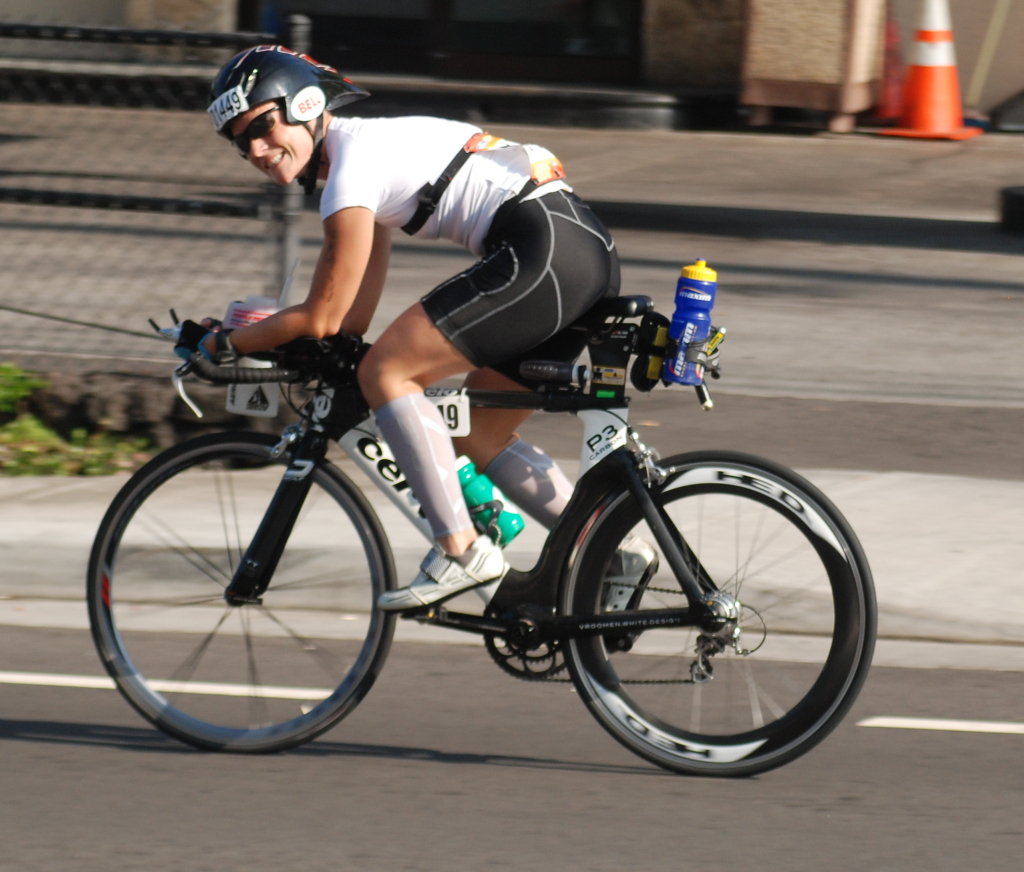
Looking happy early on the bike through town.
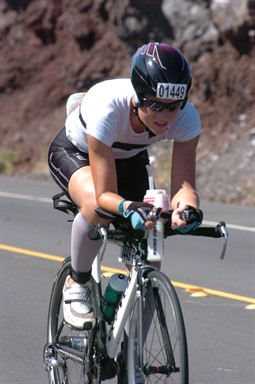
Looking less happy out in the lava fields later on.
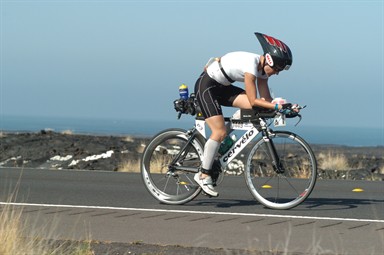
Now just willing it to be over...

...which it finally was, nearly 6 hours after it began.
The Run
As I've done in every single triathlon race in my life -- and knowing the transition from bike hand-off to run bag on the pier was long -- I left my shoes on the bike and dismounted barefoot. And this is where it all went wrong for me. Somewhere along the pier I stepped off the green astroturf and onto something red hot. I ran with the ball of my right foot burning with pain to the tents, where I sat down and tried to take stock of the situation. Ice? Blister pad? Just grit my teeth and bear it?
In the end I chose the latter, knowing I had to get out and start running or my race would slip away quickly. So ran I did, stiffly at first but loosening up, hoping the heat would let me keep moving if I could only get enough ice to cool myself down. But within a mile my foot was in agony and I started to worry that if I ignored it now, I'd be even worse off later if the blister split open. 26 miles is a long way to run, but walking it was unbearable even to think about. Looking back, this is where the chinks in the armour started and where my mental defenses started to fall down, with reasons to walk becoming excuses not to run. Stop at an aid station and see what they could do for me? Sure! Wait while they radioed another aid station to see if anyone had blister pads? Hey, why not! Over an hour to complete the first 6 miles? Ah well, my heart wasn't in it anyway.
And that was pretty much it. I spent the first half of the marathon just wallowing in my own misery, walking a lot, running when I felt guilty for walking, then walking again when my foot hurt too much to run. Most of the 17 women in my age group who'd been ahead of me blew up on the run, one by one, as I found out later. If I could have only kept moving enough to run a conservative 5:30/km pace, I'd have finished an hour earlier and in the top 10. But mostly it dawned on me that I'd pretty much used up my quota of HTFU for the year at Lake Placid. As much as I wanted to get to Kona, I'd sort of not counted on the mental effort required to do well once I got there. And without that to drive me, I was pretty much lost. Finishing the race was never in question, but racing it was long gone.
Around the halfway mark, I met up with someone in a similar situation and we started to run/walk together. We cheered others on, joked about how the handcyclists were killing us, and shared the contents of our special needs bags. Tried to convince ourselves that it wasn't so bad to be walking the marathon at Kona -- heck, tons of people would give their right arm to be in our position, right? Then with 10km to go, we did the math and realised that if we could run the last 10km in less than an hour, we'd go under 12 hours total. And finally, with a goal in mind and a reason to pursue it, I was back on track. We ran more, walked less, focussed on the task at hand and brought it home in style. My last 10km were the fastest I'd run in the whole race. My last mile was run in 6 minutes and 37 seconds. It was dark when I crossed the finish line, but I crossed it finally feeling like I deserved the finish and the medal and all the accolades that came with it. Sure, the race had taken some chunks out of me, but I'd still beaten it. And even though a few days earlier I'd been thinking that this was my first and last Kona, I suddenly decided that I'd be back sometime for a rematch, just to see if I couldn't do it better next time.
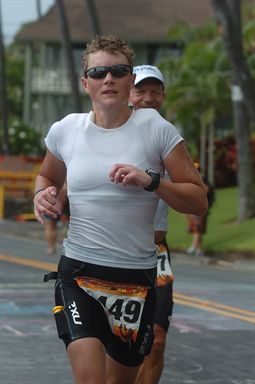
Fresh into the run, still thinking I could make something of it.
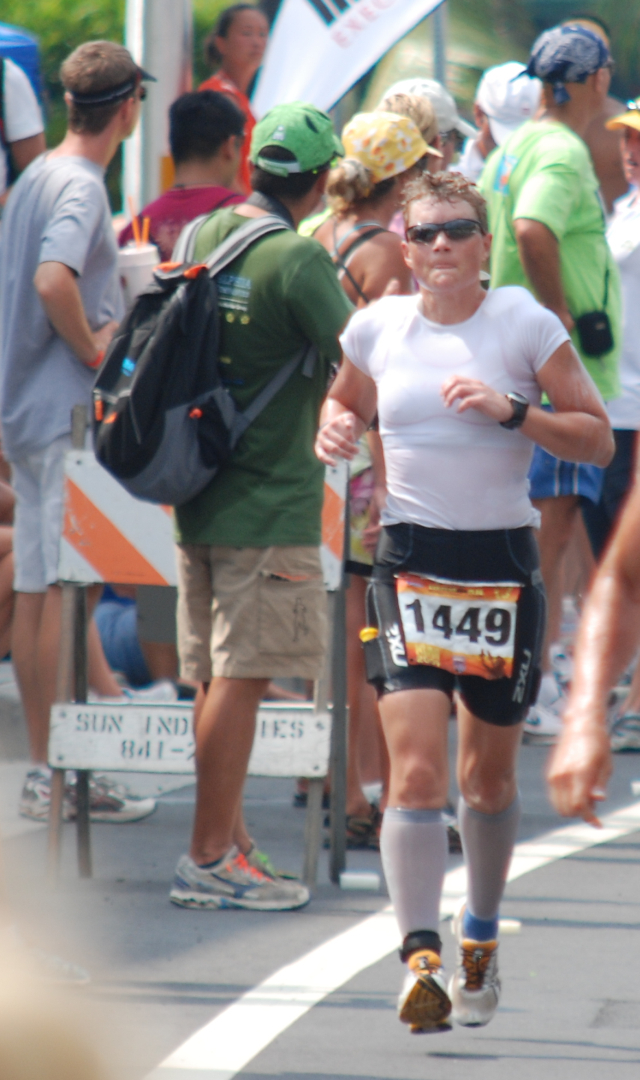
Not long afterward, realising it just wasn't going to happen.
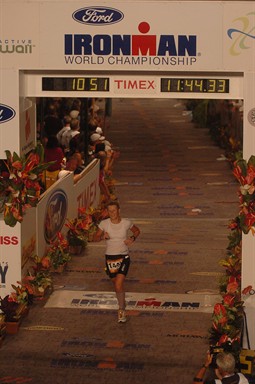
The Finish.
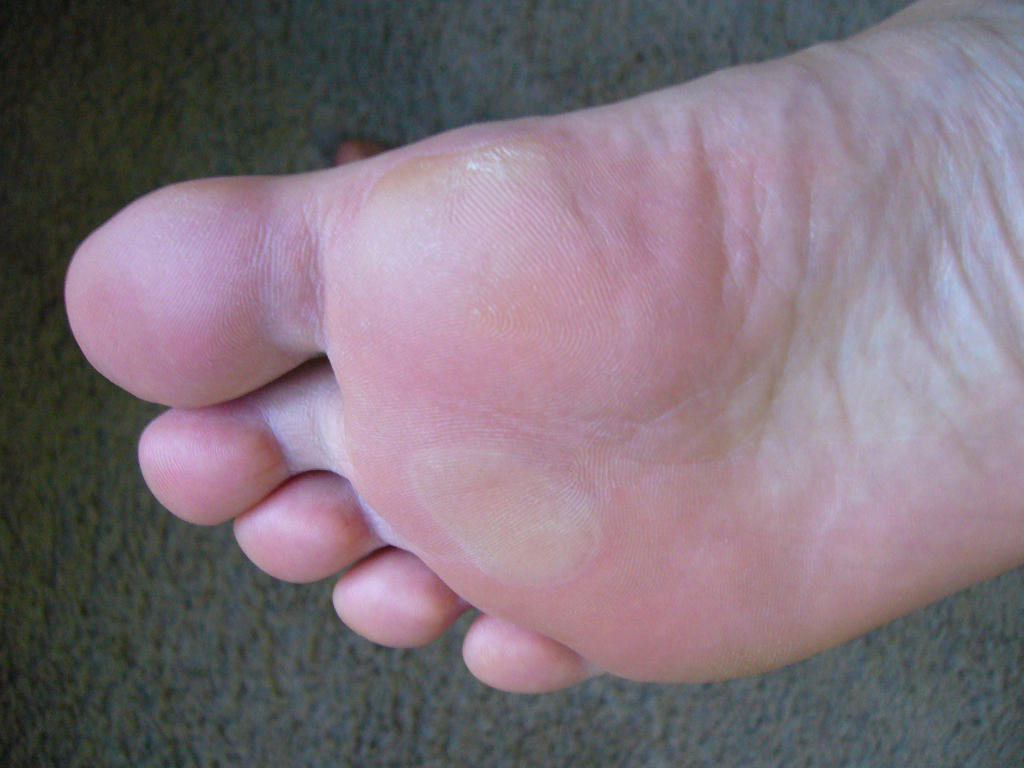
Somehow it doesn't look so fearsome the morning after.
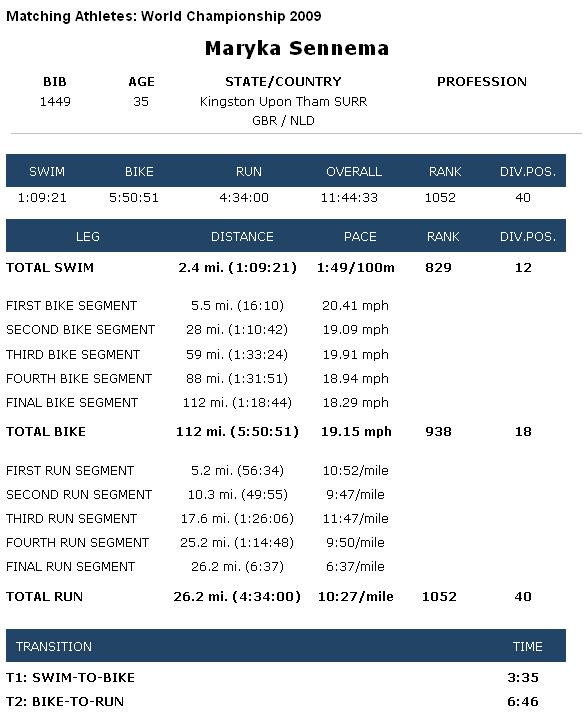
The final numbers.
The Aftermath
Since that day, I've had a lot to think about. 2009's been a great year, I've achieved above and beyond what I ever thought I could. And every time I reached a goal, I just came up with a bigger one and got busy making that happen too. My yearly totals speak for how much I've improved, and what I've done to get where I wanted to go: over 12,000km on the bike and 1500km running, nearly 600 hours of training. Ironman has been pretty special to me, but 2009 marks the year that I retire from it -- for a while at least -- to focus on other things. Sure I'll be back in Kona someday, but only when the desire to win my age group is as strong or stronger than any desire I ever had to get there in the first place. In the meantime, the hunger can grow a little at a time until it's so great that I'll be looking to call myself an Ironman again. How about 2019?

